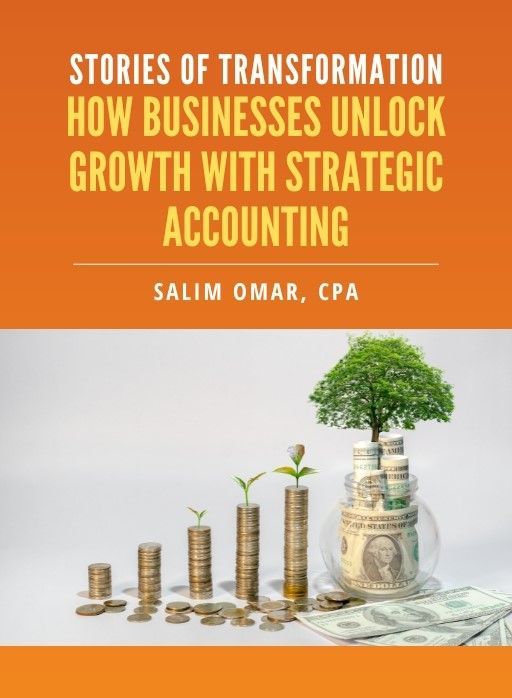Capital Expenses vs. Operational Expenses: What to Prioritize Before Year-End
The Year-End Crossroads for Finance Leaders
By Q4, your CFO or controller isn’t just reconciling budgets—they’re deciding how your year-end spending defines next year’s flexibility. Every dollar allocated to CapEx (capital expenses) or OpEx (operational expenses) carries strategic weight: cash flow, tax implications, and investor optics.
The best finance leaders don’t just “spend down”—they signal direction. CapEx decisions show confidence in long-term growth; OpEx choices reflect agility and operational strength. Together, they shape how the board reads your financial story heading into 2026.
The smartest teams frame Q4 not as closing the year, but as
staging the next one.
Frame Before You Spend
Not every purchase belongs in CapEx just because it’s big, and not every expense should stay in OpEx for simplicity. Before finalizing your year-end allocations, define what story your financials should tell.
Think of it like this:
- CapEx builds tomorrow’s capacity.
- OpEx fuels today’s performance.
The art lies in balancing both without straining cash or credibility.
What to Evaluate Now
A focused 7–10 day “spend-to-strategy” sprint should clarify where every dollar adds the most value.
CapEx Priorities:
- Tech or equipment upgrades: Accelerate automation, production, or infrastructure.
- Long-term assets: Investments that improve future margins or reduce recurring costs.
- Depreciation advantage: Use Section 179 or bonus depreciation while limits remain favorable.
OpEx Priorities:
- People and processes: Training, retention programs, or operational efficiency tools.
- Marketing and client acquisition: End-of-year pushes that generate early Q1 momentum.
- Subscription services: Renew essential software or data platforms before price resets.
Outcome: A capital allocation framework that ties spending to strategic outcomes—not deadlines.
From Accounting Classification to Strategic Signal
Boards and investors read CapEx vs. OpEx as signals:
- CapEx = confidence in long-term growth.
- OpEx = discipline and agility in the short term.
The right mix says, “We’re investing wisely,” not “We’re burning to finish the budget.”
That’s where finance storytelling meets fiscal stewardship.
Dashboards That Guide Spending Decisions
Dashboards shouldn’t just track spend—they should reveal why it matters.
Essential Views
- Cash burn vs. committed spend: Avoid end-of-year surprises.
- CapEx ROI tracking: Measure payback periods and utilization rates.
- Operational efficiency trends: Identify recurring costs that yield diminishing returns.
- Scenario planning: Simulate outcomes if CapEx is deferred or OpEx reduced.
Outcome: A visual map that lets leadership pivot between cost control and growth investment with clarity.
Controls That Prevent Year-End Chaos
Smart governance keeps agility intact without slowing approvals.
Must-Have Controls
- Classification clarity: Define thresholds for CapEx vs. OpEx company-wide.
- Pre-approval workflows: Prevent last-minute spend rushes.
- Audit-ready documentation: Track rationale for every major spend.
- Variance tracking: Flag unplanned spending by department.
Outcome: Less time defending decisions, more time steering strategy.
The Q4 Lens: Spend Strategically, Not Reactively
Q4 spending isn’t about “use it or lose it.” It’s about aligning expenditures with next year's goals. CapEx can secure future efficiency, but OpEx often provides immediate resilience.
Integrating tax strategy here is crucial—some CapEx can qualify for accelerated deductions, while OpEx offers instant write-offs. Your finance partner or
CPA should model both scenarios side by side.
Execution Lines: Act Now vs. Plan for Later
Act Now (high-impact, fast to implement):
- Finalize CapEx depreciation schedule.
- Lock OpEx contracts that support Q1 deliverables.
- Review tax advantages for accelerated write-offs.
- Update the board on the year-end allocation strategy.
Plan for Later (requires deeper modeling):
- Multi-year CapEx financing or lease arrangements.
- Major system migrations.
- Workforce expansion or incentive programs.
Outcome: Clarity on what drives value this quarter—and what builds leverage for next year.
Integration: Tie Spend to the Bigger Story
Finance isn’t just about managing costs—it’s about directing capital with intention.
Your mix of CapEx and OpEx reflects
how prepared you are for growth, and how disciplined your operations remain under pressure.
Best-Fit Approach
- Lead your year-end presentation with strategy, not spending.
- Highlight how each major expense supports company priorities.
- Keep visuals clean—show ratios, not raw tables.
- Maintain a post-review log of board feedback for the next planning cycle.
Outcome: A spending narrative that reassures leadership—and earns trust for 2026 budgeting.
Bottom Line
Year-end spending isn’t about clearing the budget—it’s about clarifying your story.
A well-balanced mix of CapEx and OpEx positions the company to move fast, invest smart, and enter the new year with momentum.
When every dollar aligns with purpose, finance becomes more than
accounting—it becomes strategy in motion.
Free eBook:
Stories of Transformation


Salim is a straight-talking CPA with 30+ years of entrepreneurial and accounting experience. His professional background includes experience as a former Chief Financial Officer and, for the last twenty-five years, as a serial 7-Figure entrepreneur.





